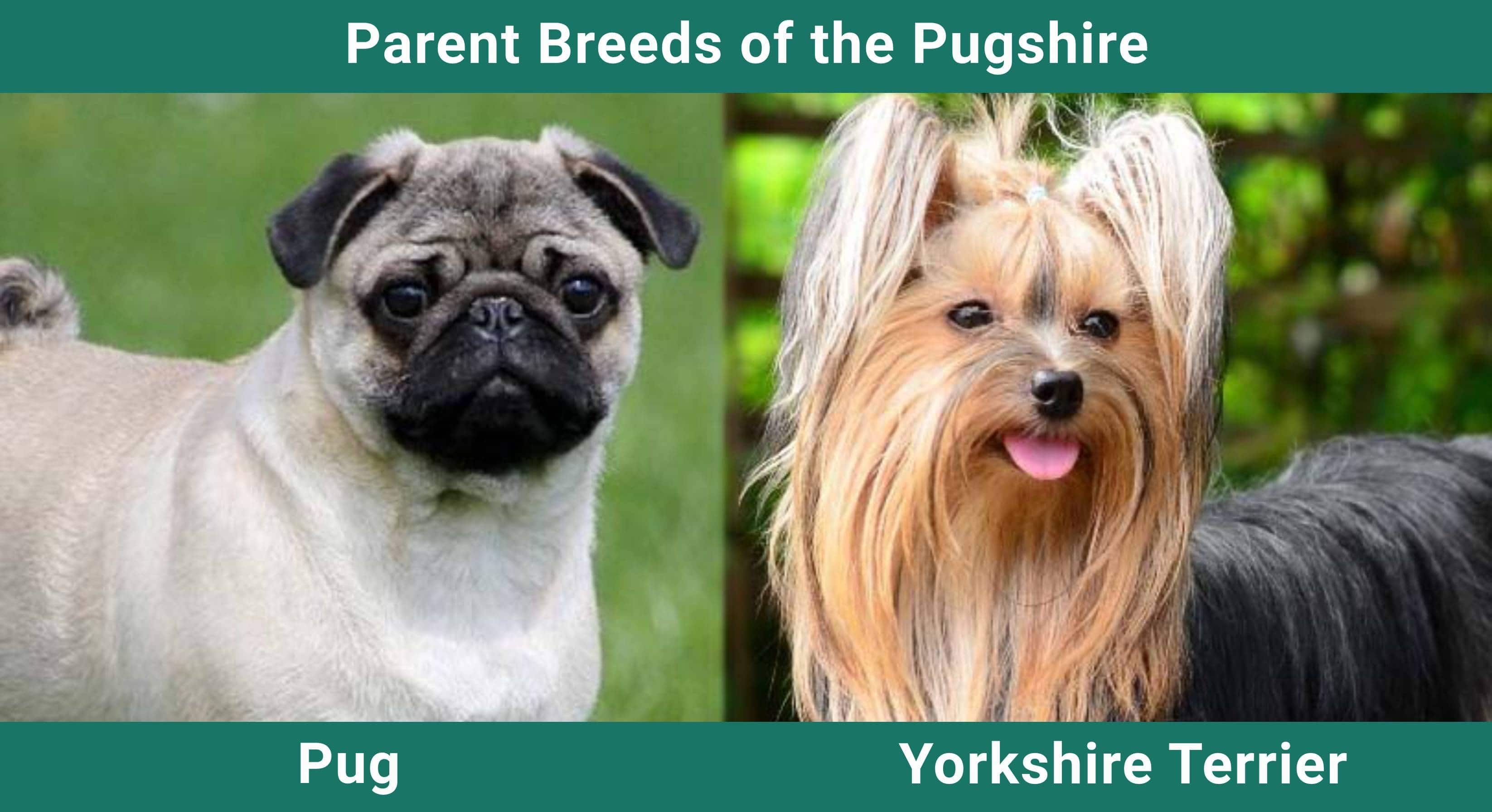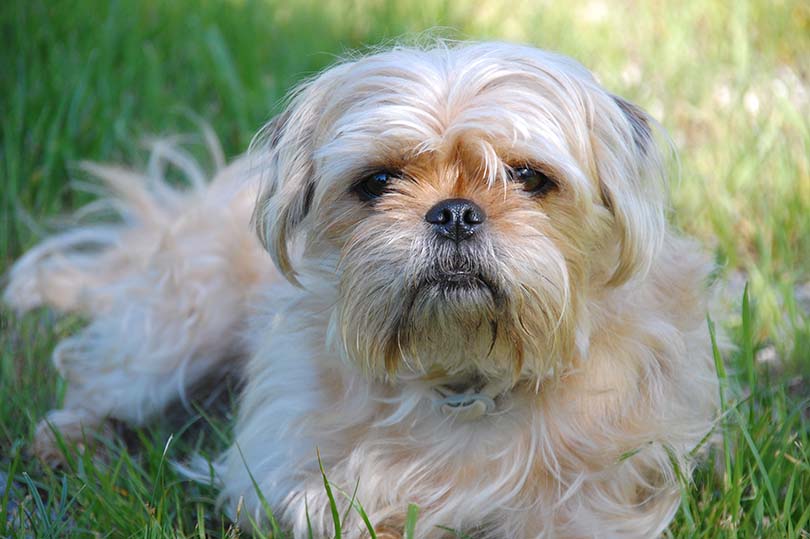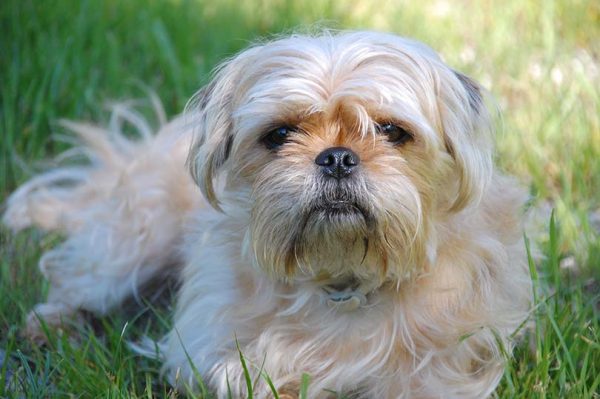Click Below to Skip Ahead
The Pugshire is a mix between a Pug and a Yorkshire Terrier, two of the most popular small dogs in North America. This dog is extremely small because both of their parent breeds are toy dogs. Typically, they don’t reach more than 12 pounds and therefore, are perfect dogs for apartment living. They do need a bit of exercise in many cases, but not nearly as much as some other dogs out there.
Breed Overview
Height:
12 – 15 inches
Weight:
7 – 12 pounds
Lifespan:
13 – 16 years
Colors:
Many
Suitable for:
Apartments, families with older children
Temperament:
Friendly, Curious, Stubborn
Pugs tend to be unhealthy. However, this mixed breed is much healthier. Their features usually aren’t as extreme as those of a Pug, which helps prevent a few common health problems.
Pugshire Puppies
The Pugshire is not the most popular dog breed out there. In fact, few breeders actively breed these dogs. Therefore, it is often quite difficult to find puppies. You’ll typically have to get lucky or wait a long time for one to become available.
Unlike other mixed breeds, there are no breeders out there that specialize in the Pugshire. Therefore, your best bet is likely your local shelter. You can look for breeders near you, but the odds of finding one are quite low. Keep in mind that many rescues also require that you get the dog spayed or neutered. Often, you have to pay for this yourself. Fortunately, these surgeries aren’t that expensive.

Temperament & Intelligence of the Pugshire 🧠
These dogs are family animals first and foremost. They love people and often bond closely with their families. They are also extremely friendly with strangers, though they may be a bit yappy at first. They can get along with practically anyone as long as they are properly socialized.
They can be prone to separation anxiety because they are so people-oriented. Therefore, crate training is essential to ensure that these dogs learn to be alone at a young age.
These dogs aren’t the brightest, so training often takes longer than you’d expect. They also aren’t significantly obedient, so they are likely to ignore commands when it doesn’t suit them. In many cases, they simply don’t have the focus to learn complex tasks or hard commands.
They can also be difficult to housebreak because they have relatively small bladders.
While these dogs aren’t extremely intelligent, it is still in our best interest to provide them with mental stimulation. They can be quite yappy but mental stimulation can help with this. Without it, they may decide that the most fun thing to do is to is bark at everyone who walks by your window!
Are These Dogs Good for Families?
Yes and no — they can be great for families with older children. However, they are not the best option for those who have smaller children.
While these dogs aren’t aggressive by any means, they can be fearful of small children. These dogs are small enough to be injured by rough kids, and they know this. Therefore, it isn’t odd for them to be a bit guarded and potentially snap at rambunctious children that get near them.
Socialization can help, but these dogs are never going to be as good with small children as some other breeds. That said, gentler younger kids may find a best friend in this breed. It just depends on the temperament of the dog and child!
Does This Breed Get Along With Other Pets?
Yes, this breed gets along with both dogs and small animals. They do require socialization, but not nearly as extensively as some other dog breeds out there. As long as they are introduced to other dogs when they are younger, they often learn to get along with them.
We do recommend puppy training classes for this purpose. These classes help train your dog (which is absolutely needed for this breed) and provide ample socialization opportunities.
Typically, these dogs are also fine with small animals, like cats. They do have a low prey drive, but regular socialization can often help with this. We recommend getting them around as many cats and other pets as you can, as this will ensure that they are accepting of them as an adult.
Things to Know When Owning a Pugshire
Food & Diet Requirements
Pugshires don’t have any specific dietary requirements. For the most part, they can eat just about any high-quality dog food.
Due to their smaller size, they may benefit from small-breed food. This isn’t necessarily because of the nutrition in the food, but rather because of the kibble size. Their small mouth can make it difficult for them to eat normal kibble.
These dogs are not prone to any dietary-linked health conditions. However, they can develop obesity if not exercised correctly. Therefore, you must watch their weight. Obesity can lead to all sorts of health problems.
While a lack of exercise is often the root cause of obesity in this breed, diet can play a role too. Only feed them as much as they need, nothing more. If you believe that your dog is obese, speak with your vet about weight-control dog food.
It is essential to feed weight-control dog food and not just lower the amount of regular food that they’re eating. This can potentially cause nutritional deficiencies.
Exercise
Pugshires may be small, apartment-friendly dogs, but they do need a decent amount of exercise. They need to be taken outdoors to run and play for at least 30 minutes each day. This can take the form of a short walk, though playing in a backyard can work too.
Without this daily activity, it is easy for your dog to become bored and under-stimulated. It isn’t uncommon for these dogs to become yappy and hyperactive when their exercise need is not met. If you want a well-behaved dog, they must be properly exercised.
These dogs don’t necessarily excel at canine sports, but that doesn’t mean that they won’t enjoy them. Plus, these sports can be a fun way to meet their exercise needs.
We don’t recommend swimming as a form of exercise, though. These dogs tend to have a shortened snout, which can make it challenging for them to swim correctly. Dry drowning is more common with brachycephalic breeds, a category that some Pugshires fall into.
You can technically meet this breed’s exercise need indoors. However, that doesn’t necessarily mean that you should keep them inside all the time. Like all dogs, they need fresh air and sunlight to thrive.
However, if the weather is bad, a few fast play sessions indoors are completely doable!
Training
These dogs are not the most intelligent canine out there. They were not bred with obedience in mind. Therefore, they don’t follow commands nearly as well as some other breeds. Luckily, they are often well-behaved indoors, so this is less of a problem.
That doesn’t mean that you shouldn’t train these dogs at all, though. You should still work to teach them basic commands.
We highly recommend taking these dogs to training classes. These will help substantially with training, and they also provide easy socialization, which is essential for this breed.
Aim to introduce your dog to a wide range of other dogs at a relatively young age. While they do typically get along just fine with other canines, socialization is still crucial. Otherwise, they may be fearful of other canines, which can lead to aggression.
It is common for these dogs to have trouble being housetrained. Not only are they more difficult to train in general, but they also have small bladders. Therefore, housetraining tends to be quite difficult. We recommend being extremely patient. Don’t expect your Pugshire to figure it out overnight, and don’t set them up for failure. Take it extremely slow, and always backstep if they have an accident.
Grooming ✂️
This breed has minimal grooming requirements. They need to be brushed every 3–4 days to prevent excessive shedding. They don’t shed nearly as bad as some other breeds, though.
These brushing sessions will also help keep your canine clean. The brush will remove hair, dirt, and debris. If you regularly brush your dog, you’ll hardly need to bathe them.
You should only bathe your Pugshire when they need it, like if they roll in the mud. However, you should not bathe them on a schedule. They tend to have relatively sensitive skin, and too many baths can quickly lead to skin irritation.
When you do need to bathe them, be sure to use a sensitive-skin shampoo. Your dog may not need it, but it is always better to play it safe.
You will also need to trim their toenails and clean out their ears regularly, about once or twice a month.
Health and Conditions
As a mixed breed, these dogs are generally healthy. However, these dogs can have extremely shortened snouts. This can result in them being classified as brachycephalic, like their Pug parent. Due to this deformed snout, these dogs can have many different health problems.
For instance, many brachycephalic dogs cannot breathe correctly. Therefore, they have a hard time exercising or undergoing surgery. It isn’t uncommon for these dogs to experience heat exhaustion and similar problems at a higher rate due to their shortened snout.
Cataracts are another common problem. These are treatable, though, unlike their shortened snout. Many older dogs develop cataracts, and this breed just seems to be particularly prone to this eye condition.
Tracheal collapse is another potential problem. This condition is exactly what it sounds like: the collapse of their trachea. With the right care, this condition is treatable. It is simply important to seek care as quickly as possible.
If the dog has skin folds, they could be more at risk for skin irritation. Moisture and dirt can get trapped in their skin folds and cause infections.
On top of this, it isn’t odd for these dogs to have sensitive skin in general. Therefore, baths and similar activities can dry their skin out, causing redness and inflammation. Their irritated skin can become itchy. If the dog scratches too much, they can tear open the skin. If this problem isn’t fixed, the sores can eventually become infected.
- Skin sensitivities
- Skin-fold dermatitis
- Cataracts
- Brachycephalic
- Tracheal collapse
- Patellar luxation
Male vs Female
The differences between sexes for this breed are practically non-existent. Any differences between these dogs are more likely to be related to the specific genes that they inherited and how they were raised.
Males may be slightly larger than females. However, much of their weight variance is more likely to come from differences in genetics. You can find plenty of females that are larger than males.
Of course, you will have to deal with differences in hormones. For instance, males are more likely to mark and wander than females. If a male smells an in-heat female, they are likely to run off in the direction of the scent.
On the other hand, females go in heat and can get pregnant. They can go through temperament changes more often than males because their heat cycle is associated with personality changes. Females are also more expensive to get fixed. However, this cost difference is minor and likely shouldn’t be a major part of your decision-making process.
3 Little-Known Facts About the Pugshire
1. They can be unhealthy
Mixed breeds are usually quite healthy. However, they can sometimes be significantly unhealthy. It mostly depends on what traits they inherit from which parents. Pugs are notoriously unhealthy. Therefore, they can potentially pass on unhealthy genes to their puppies.
2. Pugshires are quite difficult to find
In many cases, finding these dogs is extremely difficult. While Pugs and Yorkies are quite popular, this mixed breed is not. Few breeders currently produce these puppies. You have to get lucky and find one in a shelter or rescue.
3. They do require exercise
Most people assume that these dogs are extremely low energy and therefore don’t need much exercise. However, this isn’t always the case. In many cases, these dogs will require moderate amounts of exercise each day.
Final Thoughts
The Pugshire is a great companion dog. They are suitable for apartments due to their small size, though they can be a bit yappy. Furthermore, they are friendly and extremely devoted to their families. In many cases, these dogs love just about everyone.
However, their smaller size makes them an inappropriate choice for children. They can become easily injured, which can make them fearful and aggressive.
Despite their smaller size, they do need quite a bit of exercise. Therefore, we recommend them for moderately active families. They need at least 30 minutes of regular activity a day. A short walk twice a day is often enough to meet this need.
This breed can be difficult to train, including housetraining. Therefore, you need to have a bit more time on your hands to work with them.
Featured Image Credit: Eric Fahrner, Shutterstock











